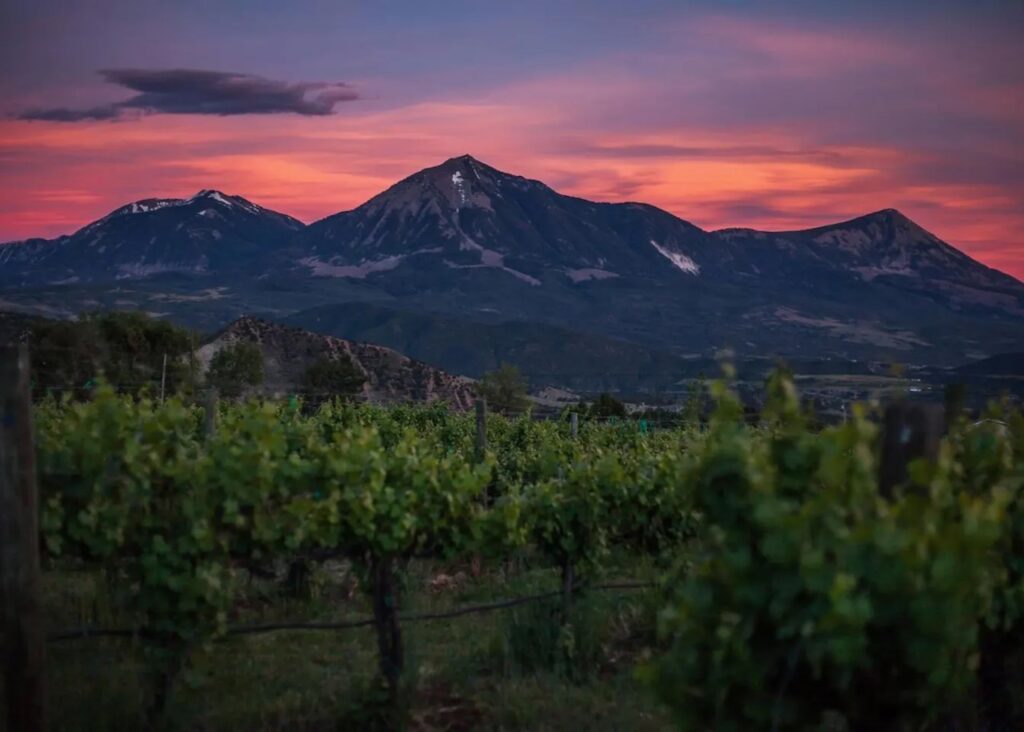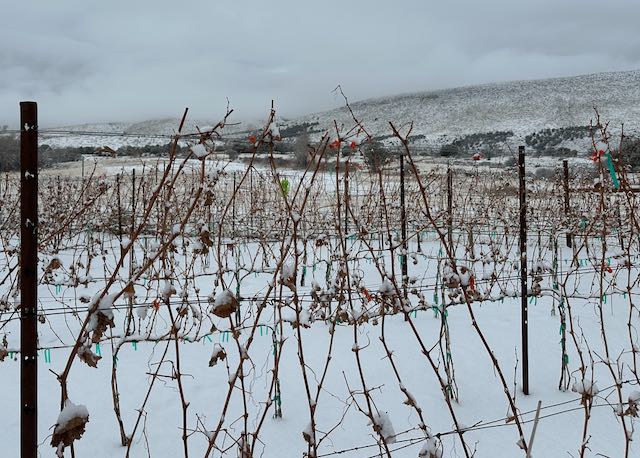Why Colorado’s Dramatic Vineyards Can Produce Great Wines (Forbes)
Paul Caputo
October 31, 2025

Entrepreneurs are seeking out challenging environments in Colorado’s high terrain, and amidst the jeopardy of the conditions, seeking to produce outstanding wines of character.
Wine lovers are inherently intrigued by terroir, for great wine regions are defined not only by their talented winemakers, but also the landscapes that come, inevitably, to represent style and personality. In thinking of the steep schist slopes that fall into the Mosel River in Germany, the misty forests of California’s Anderson Valley, or the rolling hills separating the medieval villages of Chianti, we can somehow feel these territories in the glass.
What then of Colorado’s high desert plains? Here, vines are planted at altitudes that fray the nerves of even the most experienced risk taker – between 4,000 and 7,000 feet above sea level. This hostile environment poses both opportunity and threat. Frost can strike when buds are barely formed. Water is scarce and winds sweep across the plateaus, drying soils and stressing plants. The intense light means even minor errors in canopy management can leave grapes scorched.
Yet successfully navigating these risks gives Colorado wine its personality. Days are pinching hot and intensely bright, yet nighttime temperatures drop sharply. If all goes to plan, and it often doesn’t, the end of season fruit is thick skinned, but ripe, and gives concentrated, fragrant wines with a wicked edge of freshness.

The majority of Colorado’s wine industry is located in the Grand Valley AVA, which is to say, the area around the small town of Palisade, on the outskirts of Grand Junction. Around 800 acres of vineyards line the valley slopes, supporting more than thirty wineries and tasting rooms. With hospitality standards improving year after year, this close-knit community of growers has become increasingly excited about the future.
Scott High, founder of Colterris Wines, is even more ambitious. “We’re making world class wines here, there’s no doubt about it.” The first vintage was made in 2008, and a tasting room opened in 2010. His family winemaking operation has since grown to become the largest estate-grown winery in the state. The area is fortunate enough to have the $ 1million breeze coming through. It’s called that because it saves about a $1 million of fruit each year. “Even so,” he says. “There’s an old Roman saying that where peaches grow, good wines will grow, and Palisade is famous for its peaches.”
Linda and Gary Brauns purchased the “dead vineyard” in 2012, a seven-acre plot that had originally been planted in 2007. The vines were given a 50/50 chance of viability by Bruce Talbott, a 5th generation Palisade grower. With Bruce’s help, the vines were watered extensively and within a few months, they showed their resilience and produced a small harvest of grapes that very first year. The story of Restoration Vineyards began. “Linda Braun echoes other viticultural pioneers when she says, “that sense of risk and reward is at the heart of why we chose to invest here.”
For Sauvage Spectrum experimentation and creativity remain at the heart of the idea though, as grape varieties such as Albariño and Teroldego are utilised. In typically down to earth fashion, Sauvge notes “I wish I could tell you a romantic tale of wandering through sun-drenched European vineyards, falling in love with exotic grapes, and smuggling cuttings back in my suitcase.” Nature ultimately decides what stays planted. “If a grape can handle a mountain winter, it might just stand a chance here.”

Colorado’s other major appellation, the West Elks AVA, receives far less attention. Here, twelve wineries work at even higher altitudes and in cooler conditions. It’s harder for red grapes to ripen fully, so white varieties such as Riesling and Sauvignon Blanc take the lead, producing wines of crispness and vitality.
Brent Helleckson and his wife were keen to pursue a more agrarian life after career jobs in aerospace and software. They looked up opportunities in Minnesota and North Dakota, where they were from, but discovered that one needed 5,000 acres of wheat ground, and all of the gear to farm it in order to make a living. “If one had the $10 million to get into commodity farming, why would you ever spend it on, well, getting into commodity farming?” says Brent dryly. They opted for fruit farming on the Western Slope of Colorado, near Paonia.
Stone Cottage Cellars was founded in 1994. Helleckson notes that “being ‘connected’ to the land is something we sought out, but little did we know what that would actually involve, and how hands-on our new life would be.” The vineyards are sustainably farmed at between 4,500 ft and 6,500 ft in elevation, producing wines that “exhibit a crispness, vitality, and minerality that reflect the Colorado mountains visible from our cellar door.”
It seems that the sense of adventure and precarity of this terroir that draws people in. Some, like Jayme and Steve of The Storm Cellar, left sommelier careers in New York to start from scratch in the high desert, fuelled by the same mix of curiosity and risk that seems to define all of Colorado’s wine business pioneers. “We were both mesmerized by the idea of making wine in Colorado’s extremely variable continental climate. We didn’t want cookie-cutter wines; we wanted wines that expressed the dramatic climatic situation that is Western Colorado.”

